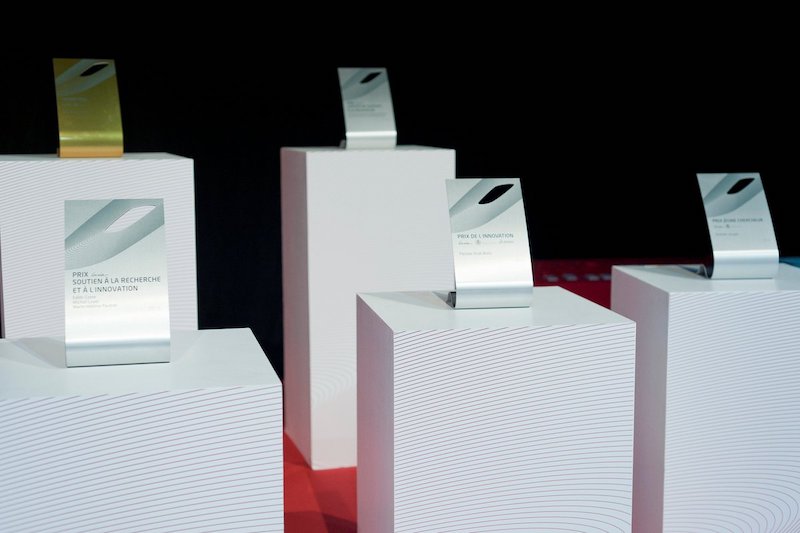The winners of the Inria - Academy of Sciences 2020 Awards have finally been announced. This year's winners were Stanley Durrleman, Pierre-Louis Curien and Pl@ntNet. Created in 2011, and supported by the French Academy of Sciences and Dassault Systèmes, these prizes highlight the innovations, major advances and successes of those who are advancing digital science and technology. By highlighting exemplary individual and collective achievements and first-rate results, these Awards highlight the importance of digital sciences and their interdisciplinary nature for our society.
Stanley Durrleman, Inria-Academy of Science Young Researcher Award
Stanley Durrleman's research focuses on the development of artificial intelligence systems that can learn the dynamics of a biological process that is difficult to observe, such as the progression of chronic disease. Over the past decade or so, Durrleman has made some significant breakthroughs by pioneering an emerging field of research at the frontier between dynamic systems, differential geometry and statistical learning. This research has accelerated under the ERC LEASP project (2016-2020) and has resulted in publications in several disciplinary fields: statistical learning, computer vision, medical imaging and neuroimaging.With his ARAMIS project-team at the Brain Institute, he has developed methods that estimate one or more reference trajectories from time-repeated patient data and allow the construction of numerical models of disease progression. They have thus been able to map pathological trajectories in three neurodegenerative diseases: Alzheimer's, Parkinson's and Huntington's. His team now uses these models to predict the progression of new patients. Such a system for automatic prediction of cognitive decline is currently being deployed at the Institut de la mémoire et de la maladie d'Alzheimer at Pitié-Salpêtrière.
The team is also working with pharmaceutical companies to use these predictions to target the most appropriate time to test a treatment and assess the extent to which it can change the trajectory of disease progression. These tools are contributing to the emergence of precision medicine in neurology.
Pierre-Louis Curien, Grand Prix Inria-Académie des sciences 2020
Emeritus Research Director at the CNRS, Pierre-Louis Curien has been a key player in French research in fundamental computing for more than 35 years. His influence, both national and international, has been a determining factor in the development of a proper mathematical theory of programming languages.In his first works, with Gérard Berry, he showed how to compile a program of a syntactic nature into an object of a purely mathematical nature (called a sequential algorithm) capable of accounting for the operational and not only functional behaviour of the initial program. A revolutionary idea that has shaped our mathematical understanding of programming languages.
At the turn of the eighties, he diverted the semantic-algebraic framework given by the category theory to extract an abstract machine (called Categorical Abstract Machine or CAM) which had a significant influence on the implementation (and the name) of the OCaml language. This line of work led in the early nineties to the discovery of explicit substitution computations and their application to proofs of corrections of implementations or optimizations. In the meantime, he was awarded the IBM France Grand Prix. In his current research, he uses his syntactic toolbox to define and manipulate algebraic structures with homotopy, which are of great relevance in the mathematical community.
The pi-r2 project-team that he founded with Hugo Herbelin (jointly with the University of Paris and the CNRS) has played a major role in the design, development and maintenance of Coq since its creation. Pierre-Louis Curien has also been deeply involved in the profound debates that prepared the creation of INS2I at CNRS, leading for the first time in France to a definition of computing as a scientific field.
Pl@ntNet, Inria-Academy of Science-Dassault Systèmes Innovation Prize
Pl@ntNet is undoubtedly one of the most important technological innovations of recent years and the fruit of an extraordinary scientific journey, at the crossroads of digital sciences, life sciences and citizen sciences.Created in 2010 within the Agropolis foundation, the PlantNet team has been at the origin of several major algorithmic and methodological contributions: the research by visual similarity implemented in the application is based on an innovative deep learning method which, combining crowdsourcing and the development of original interactive tools, allows the recognition of plants by everyone.
Originally conceived as a scientific instrument for monitoring plant biodiversity, PlantNet and its multidisciplinary team (computer science, data science, life science) now have a definite societal impact: more than ten million people use it worldwide, including hundreds of thousands of farmers and managers of natural areas, enabling better management of biodiversity by these professionals. The application is also used in a large number of educational programs, and is recognized by the Biodiversity Plan of the Ministry of Ecological and Solidarity Transition as one of the solutions to a necessary change of scale in the environmental education of citizens and in the consideration of biodiversity in all human activities.
Translated from Pierre-Louis Curien, Stanley Durrleman et Pl@ntNet, lauréats des Prix Inria - Académie des sciences 2020


